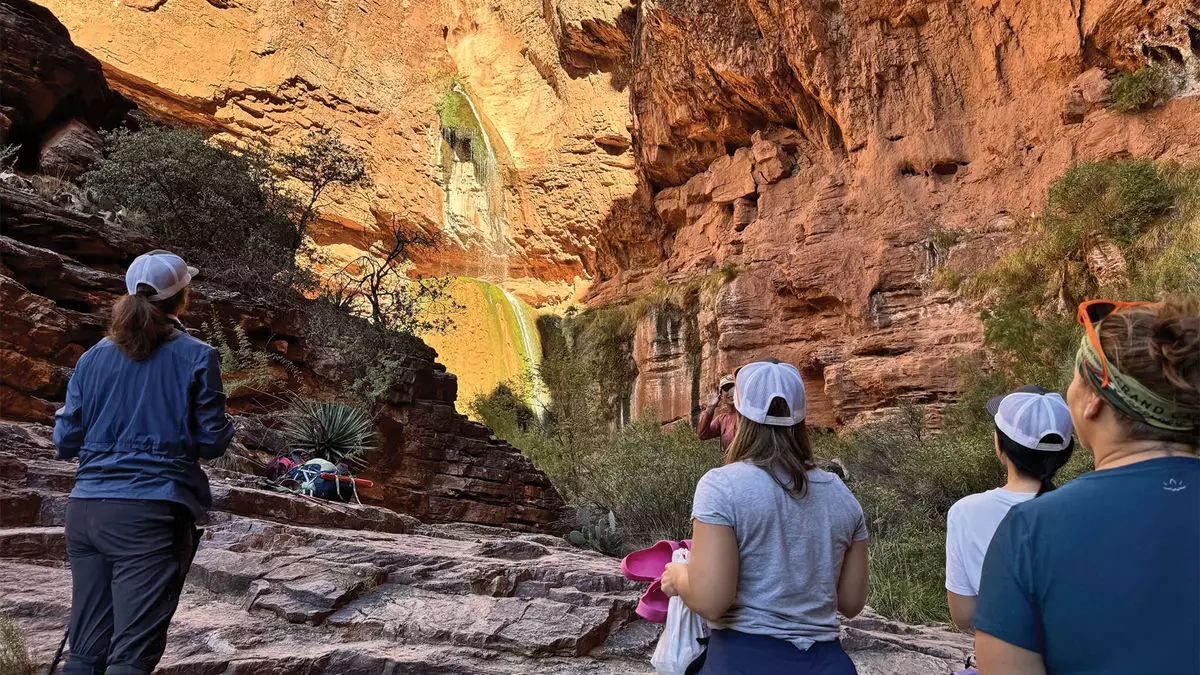In an unforeseen move, the Trump administration recently laid off approximately 1,000 employees from the National Park Service (NPS), causing a ripple of concern across tour operators and park advocacy groups. The timing of these layoffs is especially precarious; summer represents the peak tourist season for national parks, which historically draw millions of visitors. While some tour companies have ventured reassurances from park concessionaires about uninterrupted services, reports from various parks indicate that the impact of these layoffs may already be palpable.
The decision to dismiss these workers was part of a broader initiative to slash government spending, set into motion on February 14. The removal of such a significant portion of the workforce has raised alarms among both current and former park employees, as well as supporters of the National Park Service. A striking protest at Yosemite National Park, where demonstrators hung an upside-down American flag over El Capitan, symbolizes the profound discontent surrounding the cuts.
Restoring Workforce Levels Amid Uncertainty
After announcing these budgetary cuts, the Trump administration signaled a shift in approach, retracting its decision to pause the hiring of seasonal workers. Reports surfaced stating that the administration plans to hire nearly 7,700 seasonal employees while restoring approximately 50 full-time jobs. These newly reinstated positions are crucial for maintaining the cleanliness of park facilities, overseeing educational programs for visitors, and managing admission fee collections. However, while these measures are aimed at alleviating the issues presented by the layoffs, the road to recovery remains fraught with uncertainty.
Scott Cundy, co-founder of Wildland Trekking, a company that orchestrates over 1,500 hiking trips annually across numerous parks, highlights an essential concern: the effective enforcement of regulations is likely to falter with a diminished workforce. Delays in acquiring permits—fundamental for tour operations—are anticipated to grow as park staff struggle to keep up with the demands of visitors.
Tourism is not just a matter of park operations; it profoundly affects the economies of gateway communities that rely heavily on park-goers for economic sustenance. Catherine Prather, president of the National Tour Association, shared alarming insights regarding cancellations of itineraries due to “extremely low bookings.” One operator, who chose to remain anonymous, cited potential losses of up to $1 million as a direct consequence of the current uncertainty linked to the layoffs.
Visitor spending in communities neighboring national parks amounted to an estimated $26.4 billion in 2023, which directly supports around 415,000 jobs. As tour cancellations proliferate due to diminished services and altered visitor experiences, the economic repercussions could reverberate throughout entire communities. Park services, according to Prather, are vital not only for the parks themselves but also for the numerous businesses—like charter bus companies and local eateries—that thrive thanks to park tourism.
Altering Expectations: The New Norm for Tour Operators
As visitor experiences seem to hang in the balance, many tour companies are contemplating fundamental changes to their operations. Caleb Lawson from Sunrise Tours reports receiving inquiries from customers concerned about the status of their trips. Though no cancellations have occurred yet, many clients are expressing interest in itineraries that avoid national parks altogether. Lawson emphasizes that the ongoing underfunding and staff shortages in parks would further complicate the delivery of promised tour services.
A similar sentiment is echoed by Jeremy Palmer, president of Tauck, a company with a long-standing history in national park tours. After discussions with stakeholders in several key parks, he noted a cautious optimism about the potential for restored services. Despite some positive feedback, Palmer acknowledged the likelihood of ongoing reductions in public services and operational efficiencies.
Even as tour operators strive to remain optimistic, the reality is that the long-term impacts of these workforce cuts remain uncertain. Stephanie Brooks, vice president of product and operations for the Globus family of brands, articulated concerns regarding the forthcoming reductions in services. Companies are preparing to adjust their itineraries as necessary, demonstrating their resilience amid these evolving circumstances.
In a time when demand for national park experiences is expected to surge, the industry stands at a precarious juncture. The anticipation of longer wait times, potential closures of visitor centers, and uncertainties surrounding emergency services could pose significant challenges. As operators navigate this complex landscape, the importance of proactive dialogue and collaboration with park services becomes even more crucial in sustaining the integrity of national park tourism. Amid the unfolding dynamics, the preservation of these natural wonders and the economic wellbeing of the surrounding communities hinge on careful stewardship and adaptive strategies.


Leave a Reply